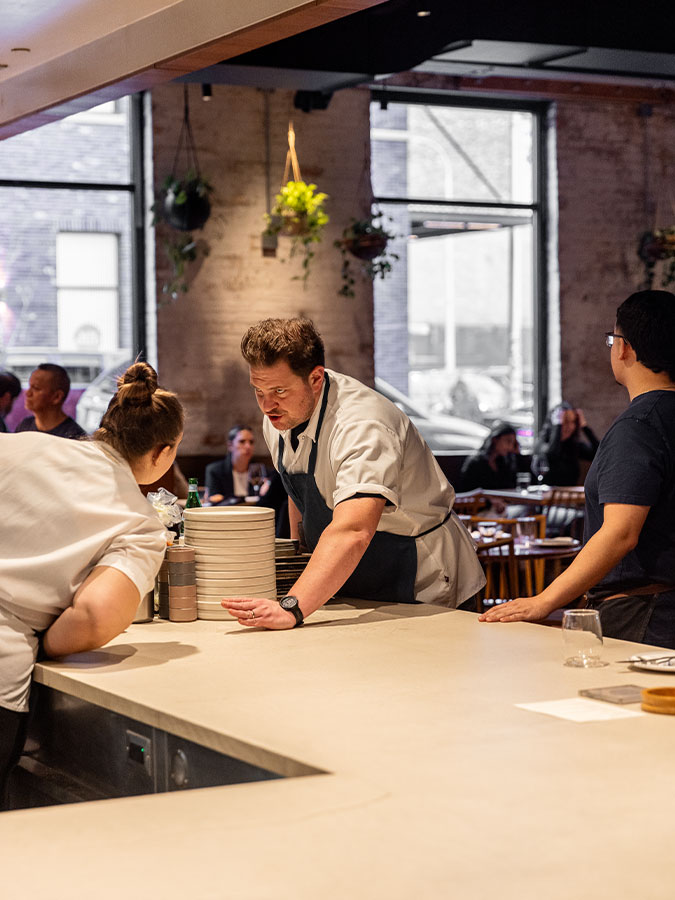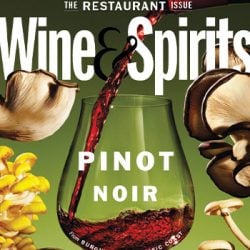

Not everyone can drink Burgundy,” although Aldo Sohm says he serves a lot of it at Le Bernardin in NYC. The region may have captured the attention of contemporary wine drinkers, fascinated by the beauty of artisan winegrowing. But Burgundy has long been the pole star for sommeliers and a certain kind of collector—usually well-heeled enough to drink the legends. While Sohm’s cellar stocks many of those micro-cuvées, now more micro than ever due to the ravaged yields of climate extremes, he actually sounds more excited than we’ve heard him in a long time when he speaks about alternatives to Burgundy. He’s finding them in new wines from the ancient vineyards of Iberia—white wines from Portugal’s Douro, or unfortified wines from the chalk soils of Jerez.
Nearly all the sommeliers we interviewed listed Burgundy first among their personal favorite regions for wine (some expressing embarrassment that their troika of Burgundy, Champagne and Piedmont had turned into an Instagram cliché). Even as many of their programs focus on classics, they responded with excitement to being asked what region is gaining traction on their lists. A few blocks north of Sohm, and high above Central Park, Hak Soo Kim reports that Portugal and New Zealand are surging at Per Se. Downtown, in the West Village, Jeff Harding name-checked Portugal as the new category gaining the most traction at The Waverly Inn.
Long a country with little to no presence on restaurant wine lists in the States, Portugal was mentioned most often, along with Spain—for Sierra de Gredos…Chile’s south…Austria and Hungary for their Central European classics. What all of these areas share is an inheritance of ancient vines and a creative upswell of artisans tending to them. If there’s anything we learned from speaking with 100 leaders in restaurant wine, it’s that they increasingly want to serve wine made at a human scale, and their guests are eager to share those wines.
It is as if the branded wines so popular in the last few decades are now the bottles people buy in wine shops—or in more business-like restaurant settings. But the creative explosion and youthful energy that was pent up during pandemic times seems to be flowing in a different direction, toward personal connections—connections made through travel or storytelling, often revolving around wine growers, or vignerons, as they call themselves in Burgundy.
Kristen Goceljak is planning her wedding in Portugal, after traveling there and falling in love with the wines and the growers—developing her own Douro house white for NYC’s Crown Shy in the process. Sohm discovered the unfortified wines of Jerez, vinos de pasto, through a friend on a trip to Spain, and then wowed José Andrés with a bottle he had open for two weeks of his favorite, the Macharnudo from Luis Pérez. Joel Arias at San Francisco’s La Mar likes to share the wines of his South American friends, especially from Itata and Maule, far down the Pacific coast from his homeland in Peru.
As sommeliers tell us about cocktails—and spiritless cocktails—pushing up against their sales of wine, they are pushing back with wines that share the cultural model of Burgundy. We’re pleased to share their stories in the pages that follow and, more extensively, online, as they navigate their cellars into a post-pandemic world of frosts, fires, AI and, ultimately, humans making and drinking delicious wines. —Joshua Greene
Our Restaurant Research
For our research project on wine in America’s most exciting restaurants, we assembled a team of a dozen interviewers, headed up by our editorial staff. All of us worked from the same online questionnaire, conducting half-hour interviews with a target list of high-level wine directors. We logged data as we recorded their stories of how their wine careers began, and spoke with them about the regions and categories of wine they personally love. We also asked about the regions and categories they focus on at their restaurants and, within those, the specific wines that are selling best. We asked these sommeliers to share stories about the bottle that most excited them to sell last year, and the bottle that gave them the most satisfaction to sell.
With this background, our conversations turned to what new categories are gaining traction on their lists; what they would want to sell but can’t convince anyone to buy; whether other beverages are gaining ground on wine, or losing ground; and, within wine, which categories are surging and which are ebbing. We have edited these discussions into an ongoing series of sommelier conversations appearing on our website, where we will also be presenting data as we continue to develop this project. We also used this research as the basis for our report on the trends creating the most buzz in dining rooms across the country.
To read the trend essays in this series, click the links below:
NA Heats Up
Bubbles are Up
Just Chill
From Rosé to Orange
Portugal’s Momentum
The Newest Spain
Northern Rhône Explorers
The Burgundy-Barolo Bridge
Vines at the Center of Europe
Natural Selection
True South
Golden State Artisans
This story appears in the print issue of Spring 2024.
Like what you read? Subscribe today.


















